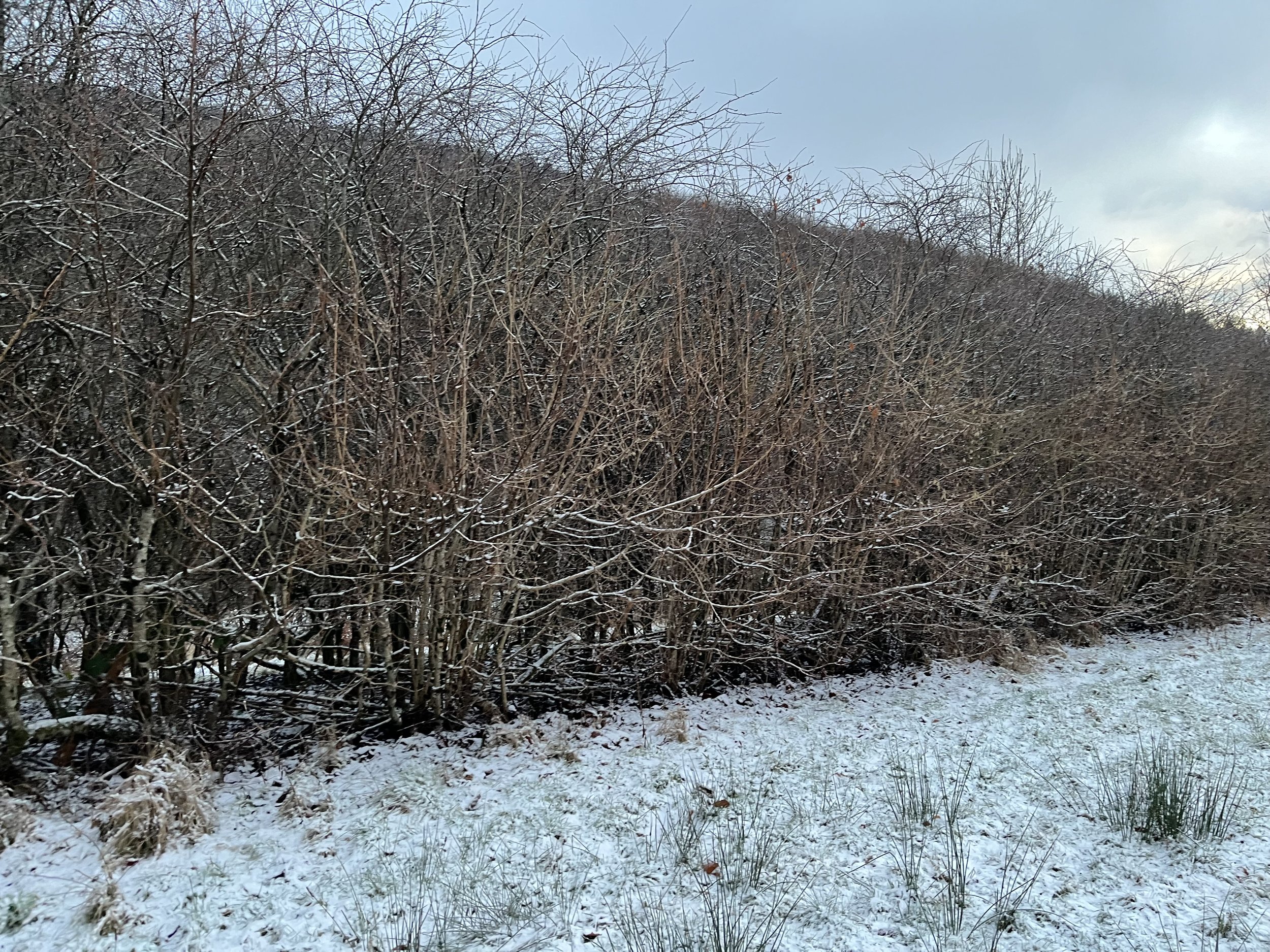What is hedge laying?
What is hedge laying?
Hedge laying is the traditional method of managing a hedgerow. Originally designed to keep livestock in. Today with modern wire fences hedge-laying has become more about the environmental benefit of a thick hedge over the row of trees, which results from leaving a hedge unmanaged. Other benefits include wind filtration, screening, noise barrier, crop protection (from frost), security (especially a hawthorn blackthorn hedge) and a more attractive boundary than a fence.
How is a hedge laid?
Hedges can be laid when the plants are dormant, sap levels are low and birds are not nesting. Generally this is between September and March, it is also easier as there are fewer nettles and less leafy growth on the trees being laid reducing the weight.
Before laying a hedge it is first prepared by removing any stems growing out too far from the centre line. Any rubbish including old tree guards should be removed especially any metal from old fencing or farm machinery which can damage tools.
There are different styles of Hedgelaying relating to the regions of the U.K for instance ‘Midland’ ‘Welsh border’ etc. The following breif description is of the Welsh border style. All styles lay the pleachers uphill as sap will not flow down and so any laid downhill will die.
A big difference between Hedgelaying styles is the double brush where the bushy ends of the pleachers stick out on both sides of the finished hedge to keep the livestock from eating the new growth at the base. In areas where crops are grown a single brush hedge has the bushy ends on one side where stock are kept and a plough side where the cut pleachers are kept clear to allow light and encourage new growth.
Suitable stems are cut at a sharp angle downwards to nearly the ground leaving a small ‘tongue’ connecting the roots and stem to keep the tree alive. The small piece left on the stem at ground level is called the heel and is removed to stop new growth on this which would be weakly attached to the roots. The stem is then pushed down to an angle of approximately 30 degrees and the top brush part is fed through a line of stakes inserted at an angle opposite to the pleachers which run down the centre. These stems are called pleachers and the process is called pleaching. The finishing touch are thin rods of hazel called binders. These are woven between the stakes to hold down the ‘Pleachers’.
Midland style
This style of Hedgelaying suited the keeping of cattle on one side and growing of crops on the other. The hedge has two distinct sides with and without the brashy tops of the stems. To achieve this the stems are laid on an angle away from the centre line so that the tops are all on one side and the bases on the other. The stakes are driven in vertically and offset on the side of the bases. Binders are twisted together to make a plat like finish.








